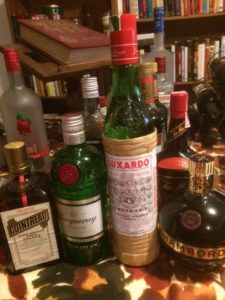Friday

Brews You Can Use
My apologies for the lack of posts this week. Marie and I are moving into my parents' house. We have a lot to do in order to get it ready. She's been carrying the bulk of the load, but this week, I had to "step up" and do a lot of work. Normally, I get pressed for time because of external commitments that I can't control (mostly, kid functions), but this week, it was all self-imposed.
I woke up this morning to this headline. Talk about a PR department's nightmare: Google searches for 'Corona beer virus' surge as news of coronavirus spread across US.
But I'd believe it (that Corona beer gives you the virus). Corona, in my humble opinion, is the nastiest swill ever concocted this side of the gates of hell. I only tried it once. I was literally startled at the taste. I assured the bartender that it must've gone bad. He assured me that it hadn't. He just chuckled and said, "That's how it tastes, man."
Speaking of Nasty Drinks I: I can definitely say beer, even if stored in brown bottles, goes rotten after 20 years. For some reason, I kept five bottles of Honey Brown in a dark spot in my home office all these years. I unearthed them while moving my 3,000-book library to the new house. My son, Alex, tried one last weekend and made the same face I made when I tried Corona. It was pretty funny, though I am a bit worried he may have contracted the honeybrown virus.
Odd: I thought they had making Honey Brown, but the Google Machine tells me it's still in production. It sounds like there may have been short gap in production when the company switched lines . . . or some such thing. I'm not sure. I remember I was pretty bummed out when I thought they had stopped making it, which is probably why I saved those five bottles. I'll have to buy another six pack "for old times sake" next time I see it.
Speaking of Nasty Drinks II: New research suggests Beethoven may have been killed by lead in his wine. Why was there lead in his wine? To make it taste better, of course.
Some of Beethoven's preferred tipples–lower-quality wines from Mainz (today, Germany) and Buda, Hungary–were often "treated" with litharge, a mineral form of lead monoxide; it would be added to “green or sour wines” to soften their character and “correct the taste of the wine's greenness.” (Other "corrective" tools Dupont cites in the 18th-century winemaker's kit: sarsaparilla, a tea of gentian root ("not pleasant") and tossing a red-hot steel tile into a barrel.)



